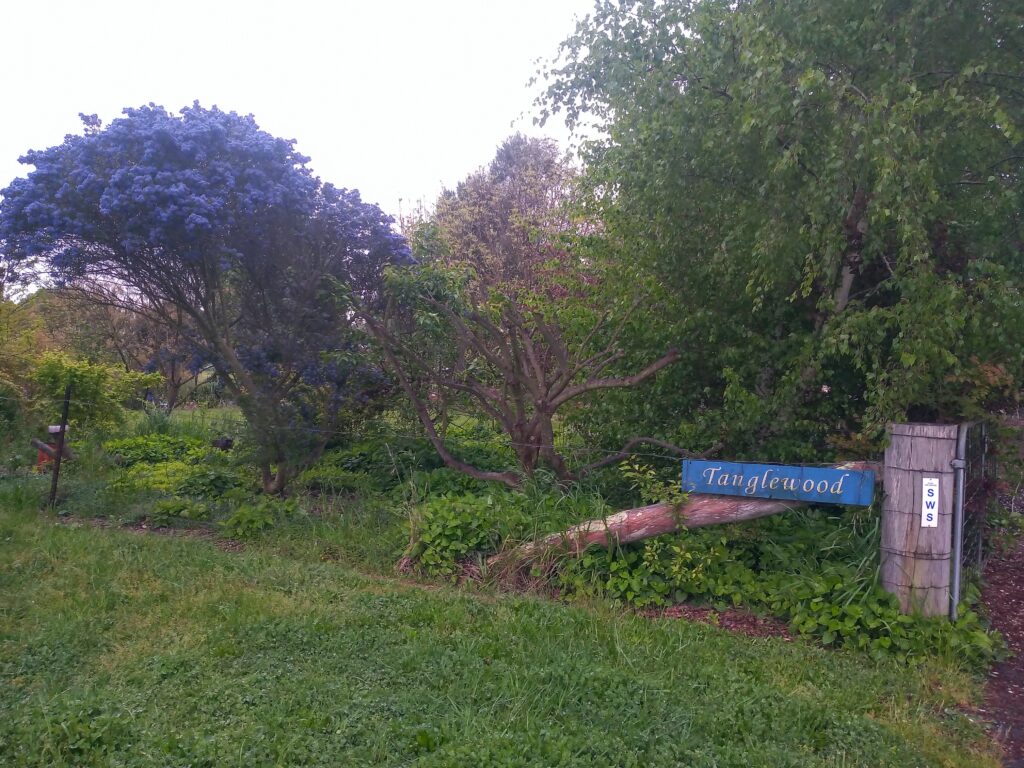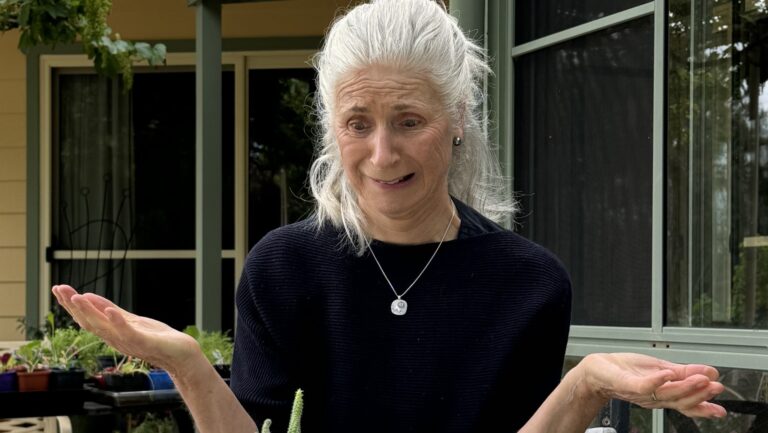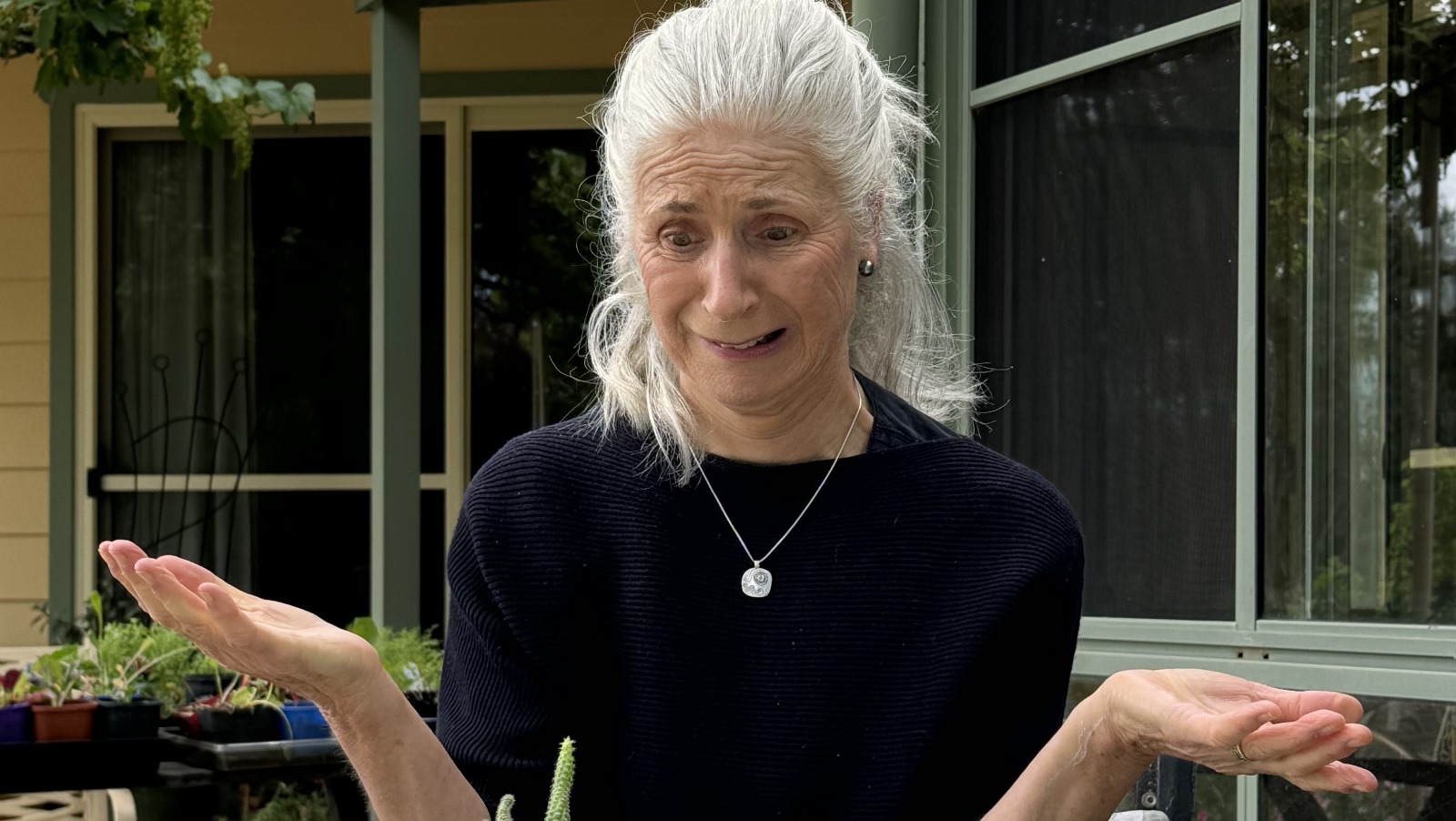Known as “the hunger gap” it is just that – a gap in the yearly cycle of planting, growing, and harvesting of food. A gap when not much happens in the garden, as one seasons harvest grinds to a halt and the next season’s planting slowly begins to grow.
When you eat primarily from your own garden you inevitably eat seasonally. And in the climate zone in which our garden is situated that means that at this time of year the “hunger gap” is a reality. The daily question becomes “What will we find to eat today?”.
Right now, the last of the potato crop has been demolished and the final carrot consumed. Parsnips, turnips, butter swedes, beetroot, daikon, pumpkin, tromboncini and the brassicas have been eked out, savoured, and enjoyed. Chard is the only green in evidence in the garden bed and even that is ‘bolting’ – quickly going to seed with the warmer weather.
At Tanglewood what we don’t grow ourselves we supplement from the local Farmers Market, so except for a few notable exceptions (avocado, sweet potato, ginger, and banana for example) we very much eat seasonally and locally. And because all local producers in our area experience the hunger gap, choice of fresh produce is limited even from the markets, and what produce there is, sells out quickly.
So, what on earth will we eat?
This is the moment calling for annual hunger gap ingenuity. The moment I have to be increasingly alert and employ extra creativity in order to feed us.
How?
Enter the hunger gap paradox
Lean though the pickings from the vegetable garden are, I remind myself that there is still an abundance of food. I seasonally adjust my eating paradigm and look for edibles and nourishment in unexpected, unlikely an unusual place.
And nature doesn’t disappoint. Typically, natures generous gifts are right before my very eyes (and feet).
So let me lead you up the Tanglewood garden path. I invite you to join me as I plunder this abundance to create a hunger gap meal. And I will introduce you to my hunger gap alternative cooking and eating style.

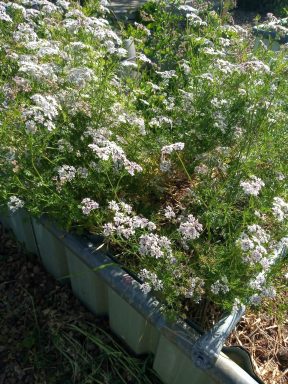
Setting the scene
Glancing around the garden beds most of the winter crops are not only harvested but the beds they occupied have been prepared and, in many instances, sown with the spring crop. Some will remain fallow in preparation for planting out the following season.
Can you see the winter herb staple of coriander? I used it daily in soups, stews, curries, winter pesto (with carrot tops and parsley) and for garnishing everything in between throughout the colder months. Sadly, it has just gone to seed with the advent of warmer weather. Only a few final fronds for garnish or addition to spring pesto remain beneath the heady weight of the seed heads.
Beyond the coriander some fearless chives and a renegade leek or two have lasted over winter. I eye them off and make a mental note to use them in the next week or so before they, too, go to seed.
There is more to abundance than what is or is not contained in the vegetable beds. It is therefore a daily journey of serendipity as I discover sources of food all around me.
Let’s look at the categories one by one.
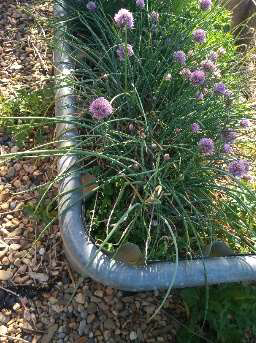
1) Hiding in Plain Sight
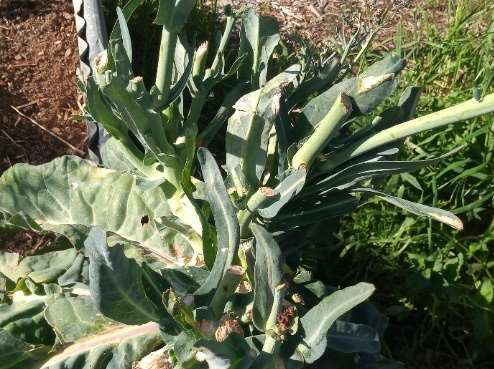
The first place to look for plants hiding in plain sight is in the bedraggled end of winter kitchen garden itself. What catches my eye are the pretty chive seed heads. Not a regular candidate for the dinner table but welcome for their colour, texture and pungent flavour which perfectly complements their leaves in a salad.
In the adjacent bed the broccoli, cabbage and kale are a by gone memory however their remnant brassica leaves have yet to be composted. These too are eminently edible, steamed or slipped into a stir fry.
Brassica seed and flower heads themselves can also be eaten. They come in white or yellow and provide welcome colour and texture to a salad or garnish.
A vegan friend of mine adds them into a baked veggie dish and tells me that their crispness is delightful.
We will need the space they currently occupy in the veggie bed in a day or so. I snip and collect as much as I can while I still can.
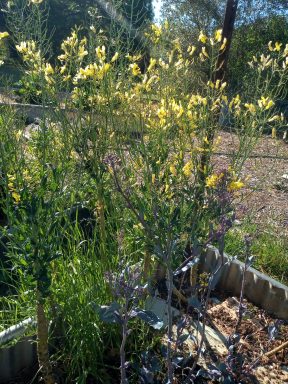
2) Out of the garden bed…. escapees
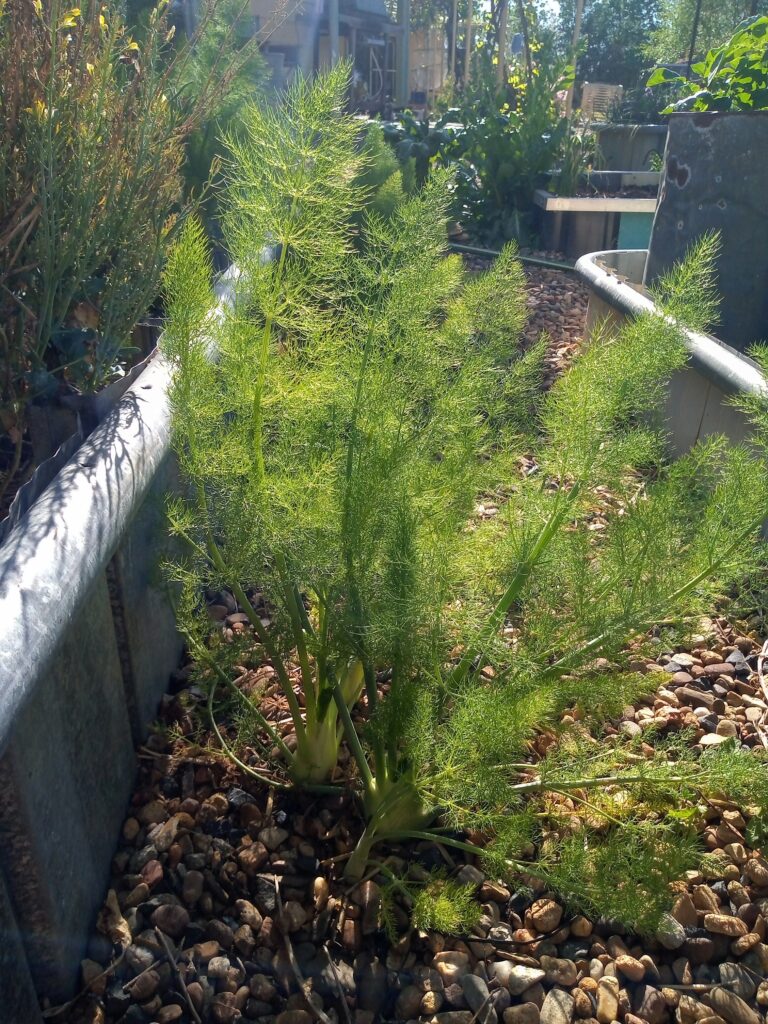
When you nurture the soil and allow natures’ abundance to have her way, the harvest happens as much outside the confines of the regular beds, as inside.
Bold fennel bulbs with resplendent feathery foliage, defiant bunches of bright red and green sorrel and board leaved sliver beet and chard (which too, wants to go to seed now the warmer weather is with us) populate pathways, pop up in lawns and anywhere they can get a hold, and grow to their hearts content.
These plants are mightily pleased with themselves. They soak up the extra warmth provided by the pebbles in our paths. This medium also provide extra stability for their roots in spring winds and help with moisture retention.
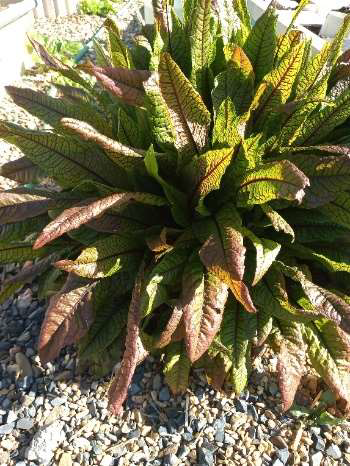
3) Perennial Edibles

Visiting the orchard come chook yard on my rounds and what do I spy?
Asparagus!
Of course. This splendid perennial crop comes up with predictable regularity but always takes me by surprise. One minute it’s the depths of winter, the next the harbinger of spring waves her resplendent spears in defiance of the hunger gap. And to add to the bounty, the birds have long since spread the seeds. This means that whenever I wander around the property, I continually find new asparagus outcrops. If they are not ready to pick this season, they will be for the following season.
This exemplifies the enchantment of abundance which delights me every year.
The harvest seemingly from out of nowhere.
My visit to the chook house to collect eggs has now provided me with the perfect meal combo -asparagus and eggs. Sumptuous.
4)Volunteer Plants
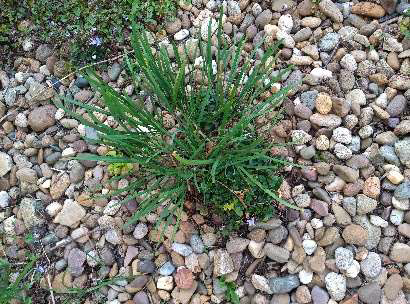
When you nurture the soil and allow natures’ abundance to have her way, the harvest happens as much outside the confines of the regular beds, as inside.
Bold fennel bulbs with resplendent feathery foliage, defiant bunches of bright red and green sorrel and board leaved sliver beet and chard (which too, wants to go to seed now the warmer weather is with us) populate pathways, pop up in lawns and anywhere they can get a hold, and grow to their hearts content.
These plants are mightily pleased with themselves. They soak up the extra warmth provided by the pebbles in our paths. This medium also provide extra stability for their roots in spring winds and help with moisture retention.
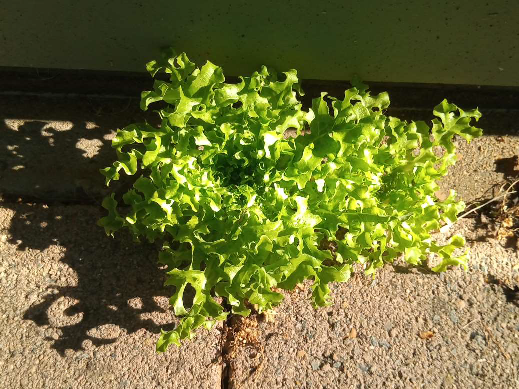
5) Edible weeds
As I wander back from the chook yard, I literally stumble over yet another source of food.
Weeds.
Edible weeds which abound in my garden are dandelion (taraxacum officinale) and its close relative, cat’s ear (hypochaeris glabra) also known as flat weed. Flowers, leaves, stems, and roots are all edible. The leaves are best picked when young (before they get tough and hairy) and are excellent steamed or sautéed.
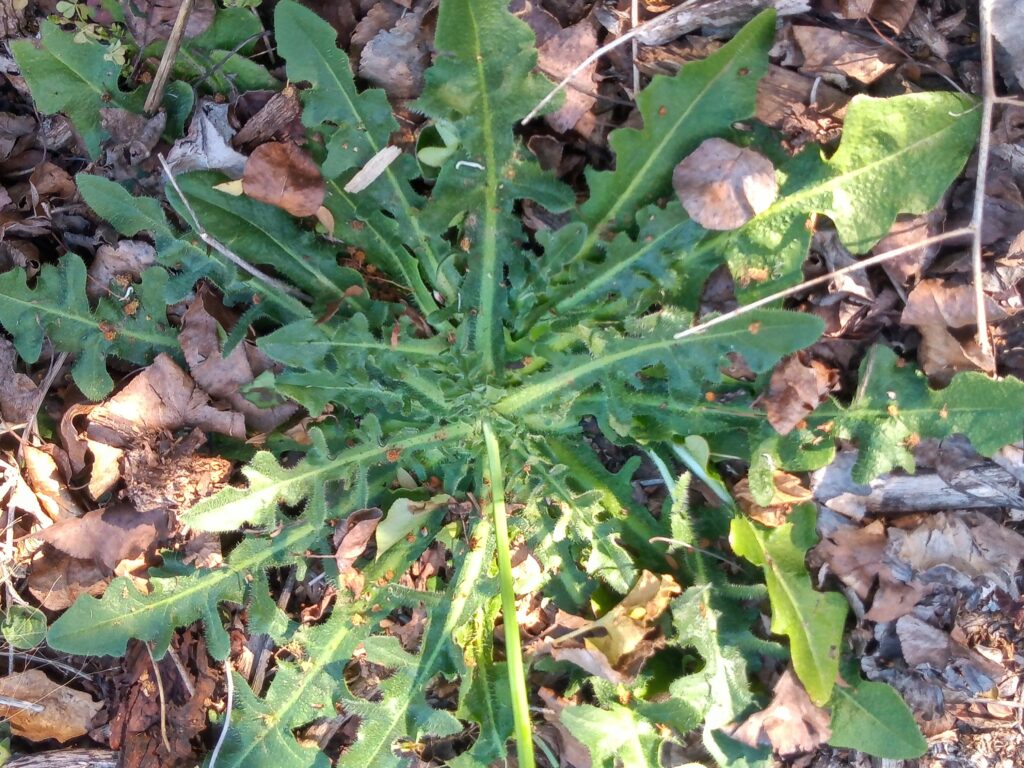
Private gardens, verges, scrub, and parkland have a wealth of weeds which are free, tasty, nutritious, and plentiful. It goes without saying that it is imperative to know what weed is and isn’t edible. There are books, apps, and courses which can help to inform and train you to know what is safe to eat and what isn’t.
Furthermore, if you are foraging for weeds in a public space ensure that the weeds have not been sprayed with chemicals and assess whether they have been exposed to undue car exhaust or other toxic residues.
If you are a bit iffy about weeds in general and cats’ ear or dandelion in particular, consider this. Their many benefits include: they aid digestion and nutritional absorption; support immune function; regulate bowel movement, stabilise blood sugar and support the detoxification of your system after winter.
6) Edible flowers
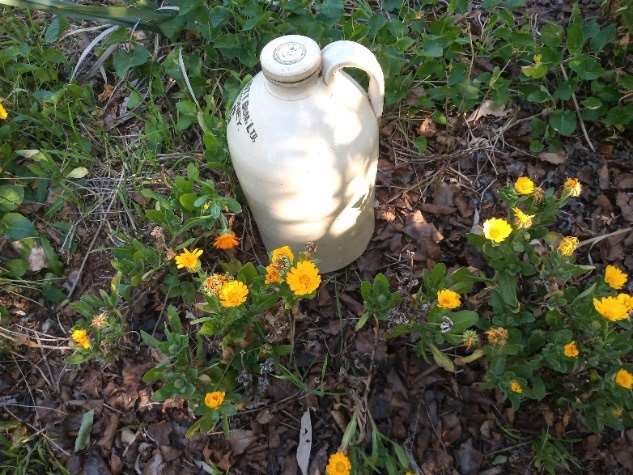
This is a favourite category of mine. I use flowers throughout the year for different culinary and curative benefits. Wellknown and much loved are rose petals and lavender heads. Both are a delicious additional kitchen ingredient and brilliant in herbal teas. Neither, sadly, are flowering during the hunger gap, so I digress.
What is flowering now however, is calendula. Orange or yellow, calendula petals add a splash of colour to any bowl of veggies, cooked or raw. They are a nutritional powerhouse: a source of vitamin C which strengthens the immune system; vitamin A which contributes to healthy organ function and antioxidants which reduce inflammation and protect cells.
And what looks great in combination with orange or yellow?
Purple!
And what is purple at this time of year in the garden?
Violets.
Violet flowers are not only edible but are another source of vitamin C. Harvesting them is a labour of love which is rewarded by their colourful and nutritious addition to the meal.
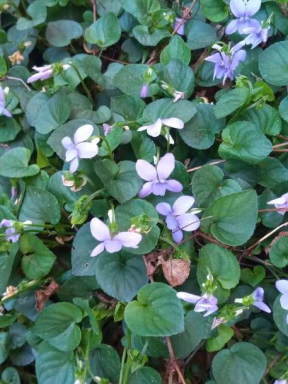
7) Hardy Herbs
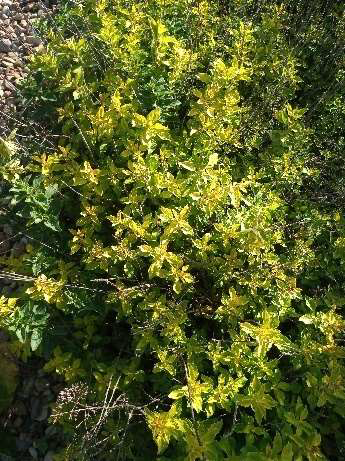
On the fringe of the kitchen garden is the herb bed. It is a bit sad and sorry for itself after winter, but nevertheless tender young oregano leaves offer themselves for the salad bowl as do the tiny clusters of fragrant lemon thyme.
My all-time favourite however is prostrate marjoram and to my delight it is beginning to come back after the frosts. Its tiny leaves pack an aromatic and taste punch which zests up the salad or stew.
Indestructible mint also springs back to life- I regularly make a hot mint drink (thank you to my Dutch relatives who introduced me to this delight). I love the mint, but the mint plant tends to love us back a bit too much. Hard to control is the understatement. My latest patch escaped a pot, and the rest is history.
At Tanglewood we have what are affectionately known as “the parsley wars”. Curley and flat battle it out in various stages of development or decline throughout the property There is always a patch to plunder for cooking, garnishing, pesto, or an addition to salads. Long live the parsley wars.
And lastly the good old borage deserves a mention. The blue flowers make a great garnish for any veggie dish and the bees thank us daily as they plunder the nectar with buzzy attention.

8) Around the corner
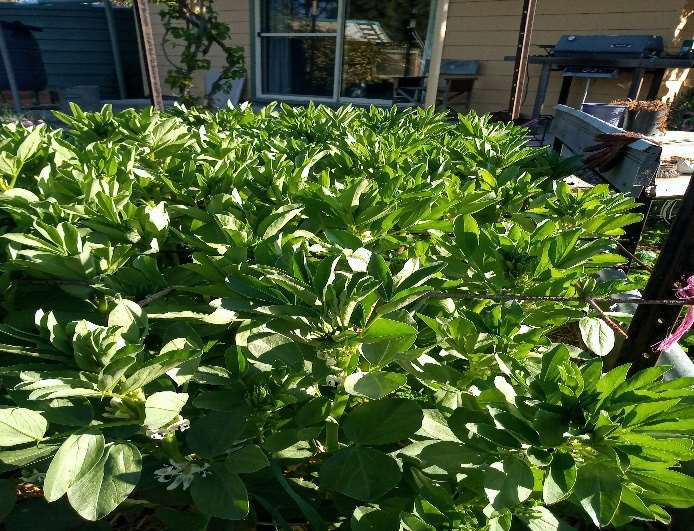
Our garden tour and collection walk is almost over. We have made our way back to the kitchen garden. Seeds which were planted a month or so ago when the earth began to warm up are growing in the well-prepared vegetable beds (except for the carrot this year which his irritatingly recalcitrant and won’t germanite- yet).
Notable in this year’s growing stakes successes are the broad beans. I remember to my satisfaction that the young broad bean leaves are edible, so pick a few as I pass by the broad bean bed.
The grape which adorns our pergola along the north of the house (think south in the Northern hemisphere) is also coming into leaf. Young grape leaves are edible, delicious, and versatile. The larger leaves are an excellent substitute for GF filo pastry- brush with melted butter or oil and line a pie dish and fill with your preferred savoury filling.
The smaller young grape leaves are of course perfect for the Tanglewood salad selection. Once the leaves lose their slightly translucent appearance however, they become too tough to eat, so pick early. They do freeze well so you can stock up with this tasty GF substitute and defrost when needed.
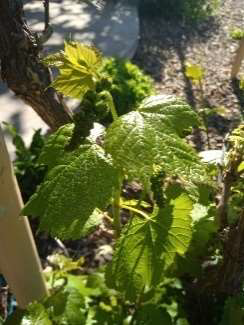
So, What did I make???
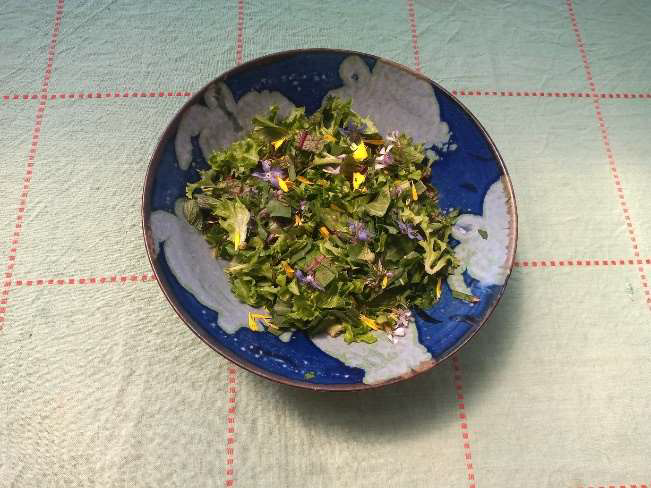
I can hear the clamour of your communal question “So what did you do with all this food?”
Well. I washed and tore the oak leaf lettuce, shredded some sorrell and placed them in a large salad bowl. To which I added: blanched asparagus and cats ears. For colour and taste I added the violet flowers, borage flowers and calendula flowers and brassica seed heads. For texture and flavour enter parsley, chives, mint, marjoram, and oregano. For additional greens in go the young broad bean leaves, young chard leaves, young grape leaves and a few fennel fronds.
And that is one tasty salad. I could add hard boiled eggs, seeds (pepita or sunflower) or nuts, but on this occasion, I don’t. I dress the salad and savour its fragrant goodness, bite by bite.
A final thought and a big thank you
The hunger gap is the season for finding and foraging, sowing and hoping, watching and weeding.
It is also the season for abundant frugality, experimentation, and creativity.
The paradox, as you will have observed as we wandered around Tanglewood together, is that there is a gap in produce in the garden beds themselves, but there is not a gap in what nature provides- out of the garden beds and out of the ordinary.
It is not long to go now before the broad beans themselves will grace our plates. We cheer as the first flowers appear and smack our lips in anticipation of tender young broad beans.
Thanks for joining me on the hunger gap garden tour at Tanglewood, October 2023.
